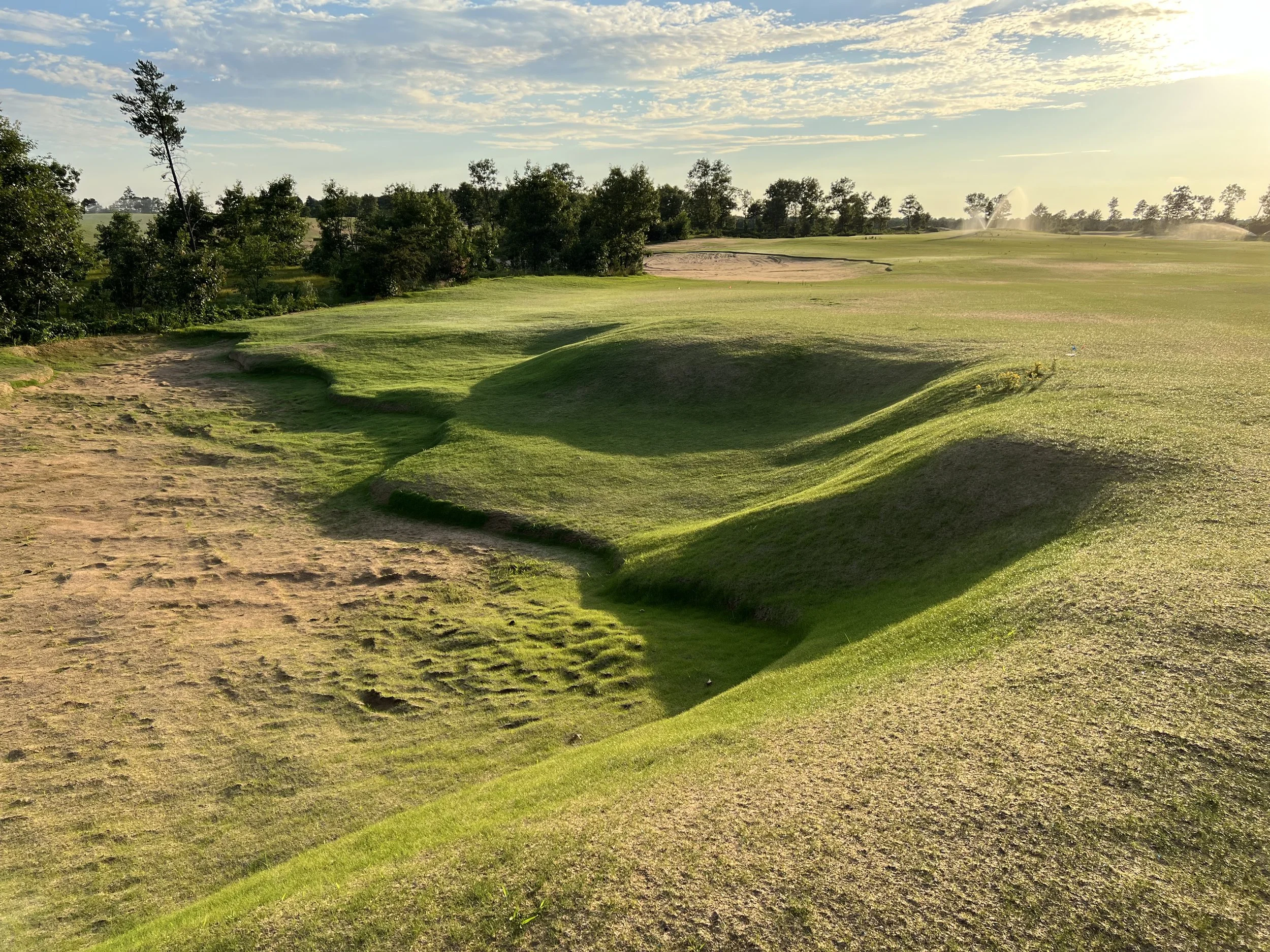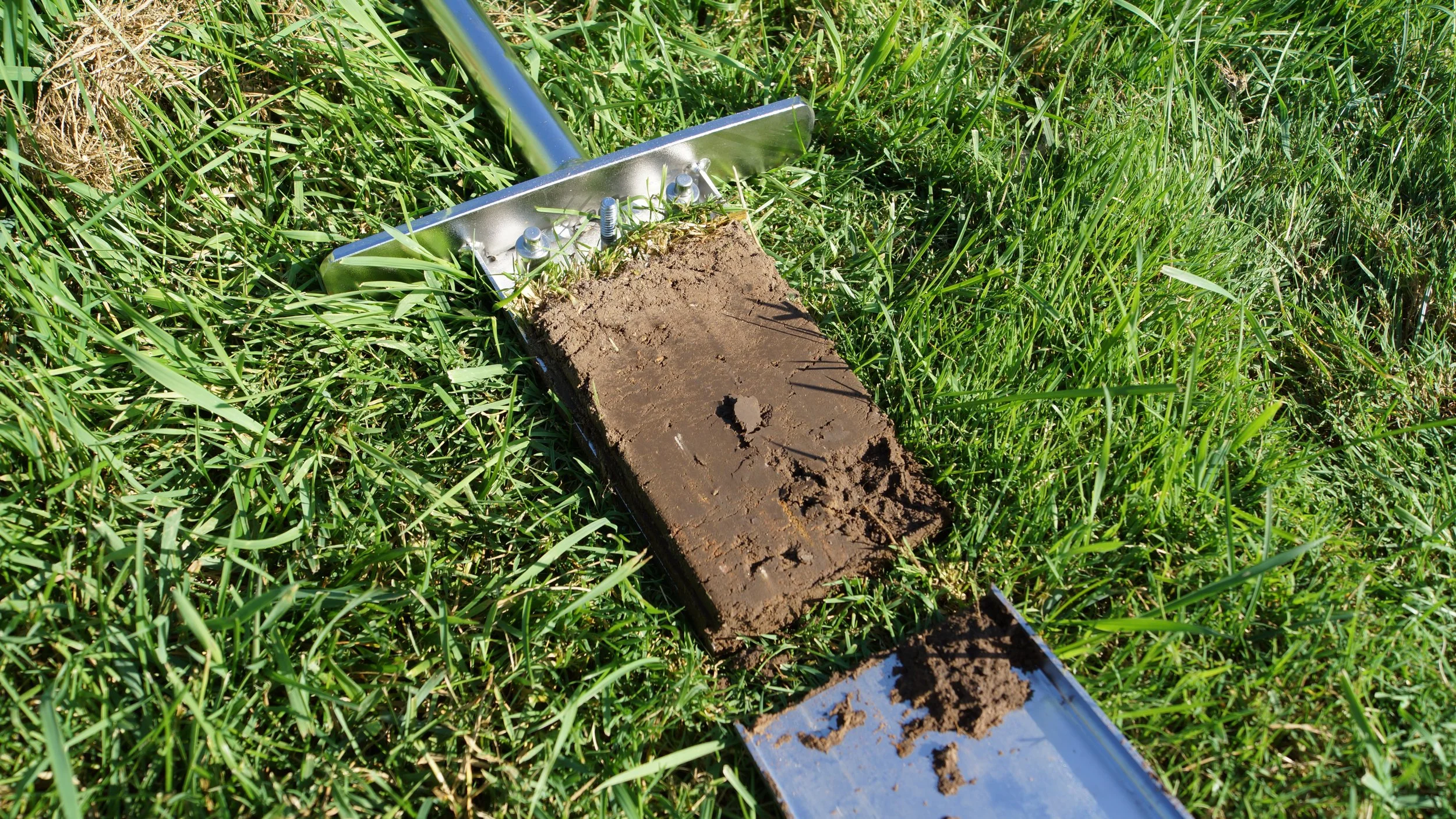July 22nd, 2025 • By Caroline Reitmeyer
5 Minute Read
Ground Rules: Laying the Foundation for Cultural Practices
Every great golf course begins from the ground up, literally. Beneath rolling fairways and manicured greens lies a foundation that determines everything from turf quality to environmental impact: soil and grass. While golfers may recognize the importance of healthy turf, the critical relationship between turfgrass and soil often goes unnoticed. Together, they form the foundation of a golf course’s sustainability, playability, and long-term success.
Turfgrass and soil not only shape how a course looks and plays, they also represent the largest ongoing investment for most golf facilities, both financially and environmentally. Managing them well is not just about aesthetics; it is about building resilient systems that reduce inputs, withstand stress, and ensure long-term performance across the course.
Foundations of a Golf Course: Soil and Turfgrass
Soil is more than just what lies beneath the surface; it is a dynamic, living ecosystem. This ecosystem plays a crucial role in supporting turf root systems, regulating water movement, and facilitating the natural cycling of essential nutrients, including nitrogen, phosphorus, and potassium. Healthy soil effectively absorbs rainfall, reducing runoff and minimizing erosion, which in turn helps protect local waterways.
In contrast, compacted or degraded soil leads to shallow roots, poor drainage, and greater vulnerability to stress and disease. These conditions increase reliance on irrigation, fertilizers, and pesticides, driving up maintenance costs, elevating the risk of chemical runoff into nearby waterways, and contributing to a larger emissions footprint through increased equipment use and chemical manufacturing.
Turfgrass is the most visible component of the golf course and plays a direct role in shaping the player experience. While its appearance often draws the most attention, the selection and management of turfgrass are complex decisions with major implications for both performance and sustainability. Choosing turf species that are well adapted to the site’s climate, soil conditions, and maintenance capacity can reduce irrigation needs, lower fertilizer and pesticide use, in turn significantly decrease operational costs and environmental impacts.
Cultural Practices
Cultural practices are the foundational turf management techniques used to maintain healthy, resilient, and playable golf course conditions.These maintenance strategies, such as mowing, aerification, verticutting, topdressing, and rolling, support turfgrass vigor, reduce soil compaction, mitigate thatch buildup, and promote consistent playing surfaces across all areas of a course.
Golf courses experience heavy use, particularly on tees, greens, and fairways. Without proper cultural practices, these areas can degrade over time, leading to poor turf quality, increased runoff, erosion, disease and diminished golfer experience. Cultural practices help address these issues while balancing aesthetic expectations, environmental conditions, and course-specific constraints.
Key cultural practices and their role
Mowing: Arguably the most visible cultural practice, mowing directly impacts the density, uniformity, and health of turfgrass. Maintaining optimal cutting heights rather than pursuing ultra-low mowing reduces reliance on fertilizers, irrigation, and pesticides, helping to sustain healthier, more resilient turf over time. Benefits of mowing include improved turf health and reduced water use, reduced stress on grass, lowering chemical dependency, and increased resilience to pests and environmental stress.
Aerification: Aerification removes small soil cores iin turf to relieve compaction, improve air flow, and help water and nutrients reach the roots. Done regularly, it deepens rooting, boosts soil microbes, and cuts irrigation and fertilizer needs, making it indispensable for healthy, high‑quality playing surfaces.
Verticutting: Verticutting slices vertically through the turf to thin out excess thatch, the spongy mat of stems and roots that blocks water, air, and nutrients. Keeping thatch in check smooths the surface, reduces pest habitat, lowers disease pressure, and boosts water and nutrient penetration. Done routinely, verticutting improves playability and cuts the chemical inputs otherwise needed to manage thatch‑related problems.
Topdressing: Topdressing spreads a thin layer of sand or soil over the turf to smooth the surface and dilute thatch. Regular applications improve soil structure, boost beneficial microbes, and create a firmer, more resilient turf that tolerates pests, disease, and drought with less water, fertilizer, and chemical intervention, ultimately delivering uniform, consistent playing conditions.
Rolling: Rolling smooths and speeds up putting greens without shaving turf dangerously short. By firming the surface instead of lowering the mower, it delivers consistent green speed with far less stress, resulting in lower water, fertilizer, and pesticide use, reduced disease risk, and overall reduced maintenance inputs.
Cultural Practices as a Strategic Sustainability Framework
Cultural practices are not isolated maintenance tasks but interconnected tools within a broader management strategy. Integrated thoughtfully, these practices boost turf resilience, reduce reliance on costly chemical inputs, and support the long-term environmental health of the golf course ecosystem. By consistently prioritizing practices like proper mowing, regular aerification, targeted verticutting, careful topdressing, and rolling, superintendents can create conditions in which turfgrass and soil mutually reinforce each other's health.
Of course, even the best management practices can only go so far if the turf itself is not suited to the environment. Selecting the right turfgrass from the start is just as important as managing it well. That is where the principle of “right plant, right place” becomes essential—choosing turfgrass that naturally thrives in the local climate can dramatically reduce inputs and improve overall course performance.
Why “Right Plant, Right Place” Matters
Not every grass thrives everywhere, and forcing a mismatch can quickly drain water, chemicals, and budgets. Choosing turfgrass that is naturally suited to a site’s temperature range, rainfall pattern, and day‑length is a pivotal decision that pays dividends for decades.
Choosing climate‑adapted turf is not just a best practice; it’s a strategic investment that pays off now and positions a course for the future. Properly matched grasses can reduce irrigation by around 40%. Slow‑growing, drought‑tolerant cultivars mean fewer mowings, less equipment wear, and reduced carbon emissions. As water restrictions tighten and weather extremes intensify, deep‑rooting, stress‑tolerant varieties provide a buffer against supply shocks and costly course closures.
Final Thoughts
A golf course’s performance, sustainability, and player experience all begin with its foundation, soil and turfgrass. These two elements shape everything from how the course plays to how much water, labor, and chemical input it requires. They are the most visible aspect of the game to players and the most resource-intensive component of any facility’s maintenance program.
Because of their influence, soil and turf deserve more than routine upkeep, they require thoughtful planning rooted in site-specific conditions. That means selecting turfgrass that is naturally suited to the local climate and building a maintenance program that integrates the right combination of cultural practices. There is no one-size-fits-all solution. Each course must find its own balance based on its goals, budget, landscape, and climate.
Courses that get this foundation right will see the benefits across every part of their operation: lower costs, greater consistency, improved environmental performance, and more resilient playing surfaces that stand up to stress. Soil and turf are not just what the game is played on, they are what determine how the course performs and how it endures over time.


